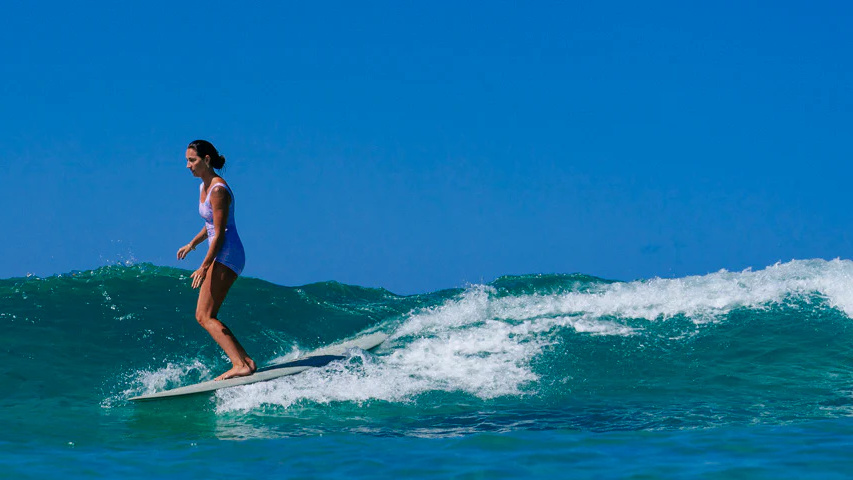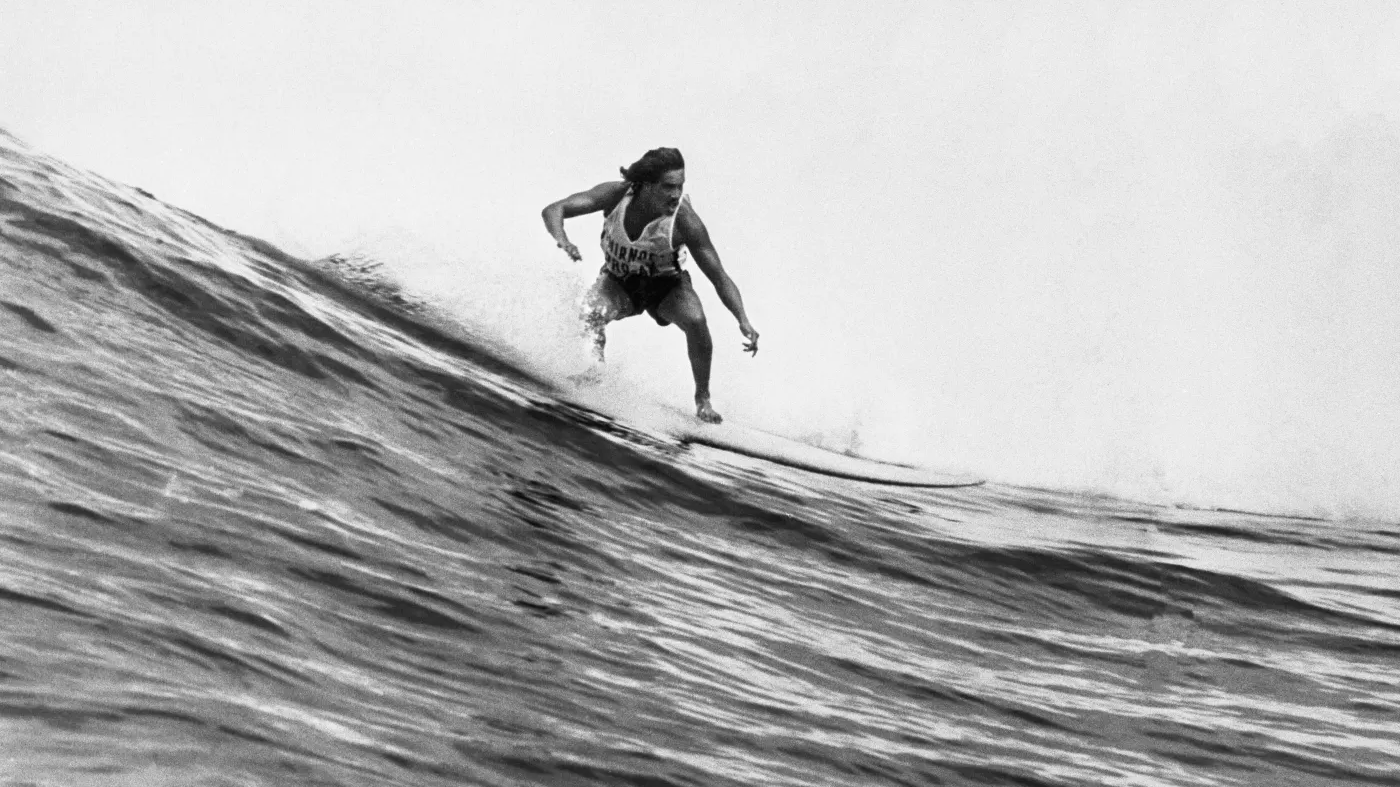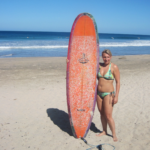Now Reading: Pump up the volume to fix your pop-up
-
01
Pump up the volume to fix your pop-up
Pump up the volume to fix your pop-up

FOR OUR GUILD FACTOR CALCULATOR, CLICK HERE.
The first board I bought was a 7’6’’ epoxy Bic. I honestly don’t remember how much research I did, or even if there was any other choice in the local surf shop. Do I remember how much volume it had? Yeah. Sure. LOL. No clue, dude.
🧊 As a beginner, you don’t know what you don’t know
No one told me that volume = flotation, and that it’d affect how well or easily I get to paddle, catch waves, or pop up.
These days, when you’re buying a surfboard, you can usually find information on the volume either in a spec or written on the bottom of the board, along the stringer.
But if you have an older or secondhand board with no info, then you’d need to find a large paddling pool, submerge your board, and calculate how much water (in liters) it displaced. Fun!
Worth it, though! Because if your board doesn’t provide enough volume for you as a beginner, you’re going to experience a lesser pop-up, plenty of missed waves, and overall slower progression.
📏 How do I know what volume to go for?
This will depend on three factors:
- Your weight (primary—include your wetsuit)
- Skill level (included in the formula)
- Wave conditions
Let’s put conditions aside for one red-hot minute—you will be in the whitewash for a while, and then catching small green waves.
❌ Welcome to the Guild Factor!
Pioneered by surfboard designer and shaper Whitney Guild, it’s a guideline used to help surfers choose the appropriate surfboard volume based on their weight and skill level.
It’s expressed as a ratio of your weight to the volume of your surfboard, and it simplifies choosing the right amount of flotation (volume) for your needs.
🧮 How it works
I have seen many different recommended Guild Factor ranges for different skill levels, but this one will work best for us beginners.
Guild Factor:
- Beginner: 0.8–1.0 = volume is 80%–100% of your body weight in kilograms
- Intermediate: 0.60–0.80 = 60%–80% of your body weight in kilograms
- Advanced: 0.40–0.60 = 40%–60% of your body weight in kilograms
The calculation works like this: I’m 170 lbs / 77 kg—my surfboard volume should be between 77L (1.0 GF) and 62 L (0.8 GF). As it happens, my Wavestorm is 81L and my Gerry Lopez foamie is 70L. It works!
🧠 The mistakes we make
Most beginner and intermediate surfers don’t use enough volume. And we tend to choose a board based on length alone (some people choose based on color—guilty). Boards with identical dimensions can have different volumes depending on design.
Also, as you get more experienced, you will discover that different board shapes play differently with volume, and may even float better at lower volumes—but that’s like high math, and we’re not there yet.
🎁 Bonus tips!
- Add volume: Small/weak waves and thick wetsuits
- Reduce volume: Steep/powerful waves and bikini-forward waters






















